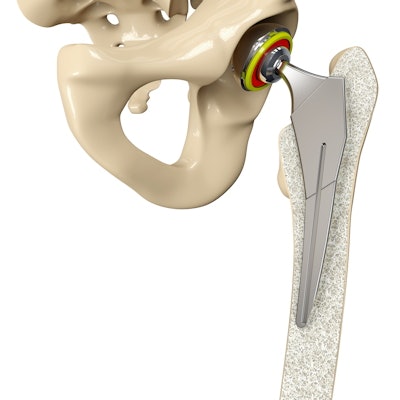CHICAGO – Research presented on November 26 at RSNA 2023 suggests that AI technology, trained using standard x-rays, could revolutionize patient-specific hip replacement planning.
Dr. Pouria Rouzrokh, from the Mayo Clinic in Rochester, MN, introduced THA-Net during a session on musculoskeletal imaging. This deep-learning algorithm shows promise in streamlining presurgical planning for total hip arthroplasty (THA) by facilitating patient-specific surgical strategies and identifying optimal postoperative targets.
Traditionally, THA templating involves manual measurements and 2D implant renderings on preoperative x-rays. While essential for enhancing surgical efficiency and reducing complications, this process can be laborious. Rouzrokh highlighted the significance of optimal templating in visualizing surgical outcomes and anticipating challenges.
THA-Net, trained on a vast dataset of 356,305 x-rays from 14,357 patients who underwent procedures between 2020 and 2022, utilizes advanced techniques. The algorithm employs a pretrained YOLO model to isolate the hip joint from preoperative pelvis x-rays and a classifier-free conditional diffusion model to generate realistic postoperative x-rays with THA implants.
In a study evaluating THA-Net, orthopedic surgeons assessed the realism of synthetic postoperative x-rays compared to real ones using a 10-point Likert scale. The results showed that the synthetic images produced by THA-Net were rated as significantly more surgically valid than real x-rays, demonstrating high realism and validity.
Dr. Rouzrokh emphasized that reviewers found it challenging to distinguish between real and synthetic x-rays, with the synthetic images deemed as realistic as their authentic counterparts in a majority of cases. The algorithm’s output also met software-based criteria, further validating its efficacy.
Future developments for THA-Net include external validation and integration with robotics, navigation, and AR/VR technologies to enhance surgical precision and reduce reliance on 3D imaging data. The potential deployment of this model at the Mayo Clinic signifies a significant step forward in innovative surgical planning tools.





